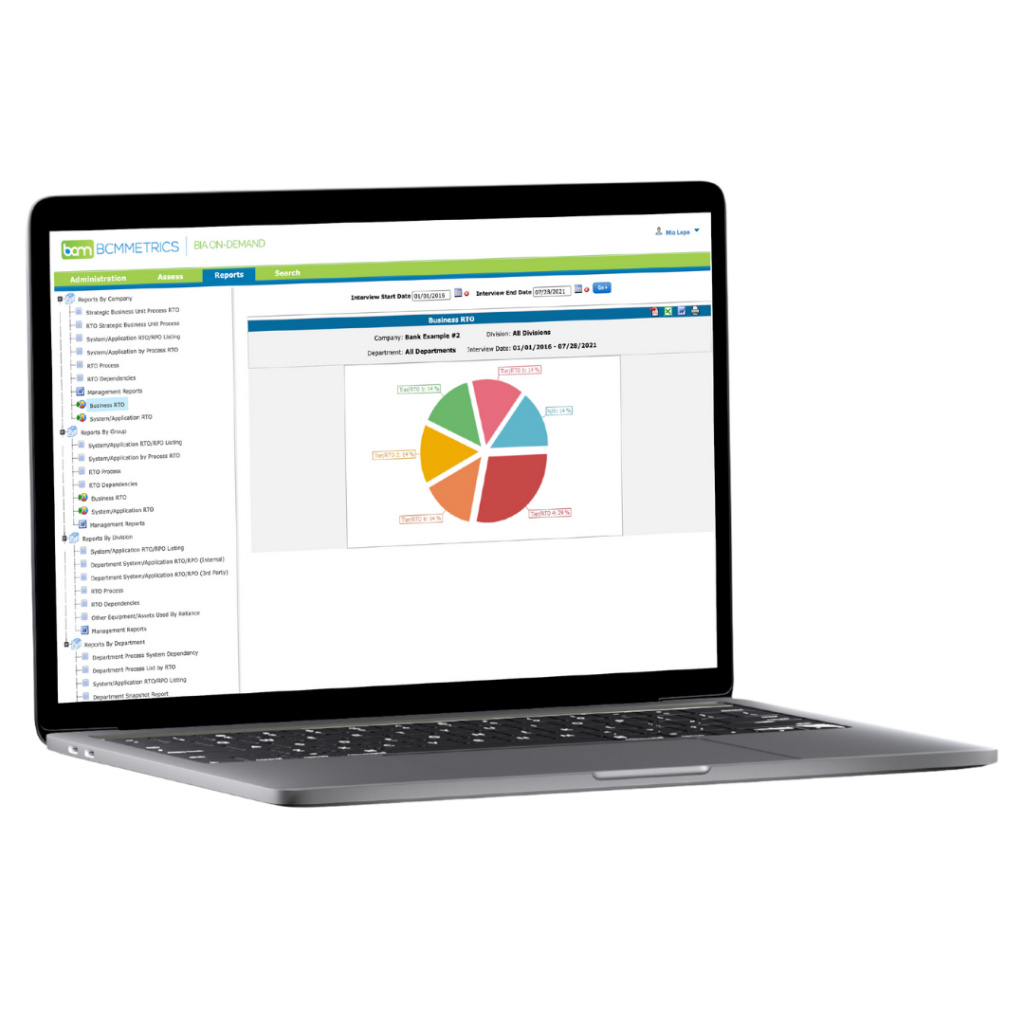BCMMETRICS™ - Business Continuity Software
Our suite of tools is designed to give BCM practitioners all they need to establish and maintain a resilient BCM program.

Improve your continuity program with intuitive BCM software
BCMMETRICS™ is a robust suite of tools designed
to give you clarity within your BCM program.
Get “FICO-like” scores of your program’s alignment with industry standards.
Detailed Reporting on:
- Program Compliance
- Industry Standards Alignment
- Risk-Based Auditing & Reporting
- Program Benchmarking
Everything you need to conduct a complete business impact analysis.
Detailed Reporting on:
- Recovery Time Objectives
- Recovery Point Objectives
- Qualitative & Quantitative Impacts
- Critical Business Functions & Dependencies
Build and maintain your BCM plans in one SaaS-based tool.
Manage your BCM Documents:
- Build Your Plan Templates
- Document Plans Using MS Word Based Editor
- Integrate Your BIAOD Results with Business Recovery Plans
- Maintain Your Plans and Critical Information
Seamlessly access and organize site recovery plans from anywhere.
BCM Plan Management:
- Graphically Display Your Sites Across a Map
- Prioritize Each of Your Sites
- Securely Store Your Recovery Plans
- Filter and View Your Sites by Priority
See the BCMMETRICS suite in action.
Streamline your BCM Program management with our software.
- Create a comprehensive look at your BC and IT disaster recovery functionality.
- Establish well-informed business continuity decisions based on metrics in mere minutes.
- Keep your BC plans up to date with our software updates when standards change.
- Meet the needs of all of your stakeholders with clearly-defined reports.
- Be up and running quickly with our attentive onboarding and support.
Flexible BCM
Software Solutions
Unlimited access to all 4 tools
or pay-per-tool-use available.
- Training & setup services
- 10% Discount on hourly consulting fees
- Access to BCMMETRICS User Group meetings and resources
- Access to training resources
- Technical support








